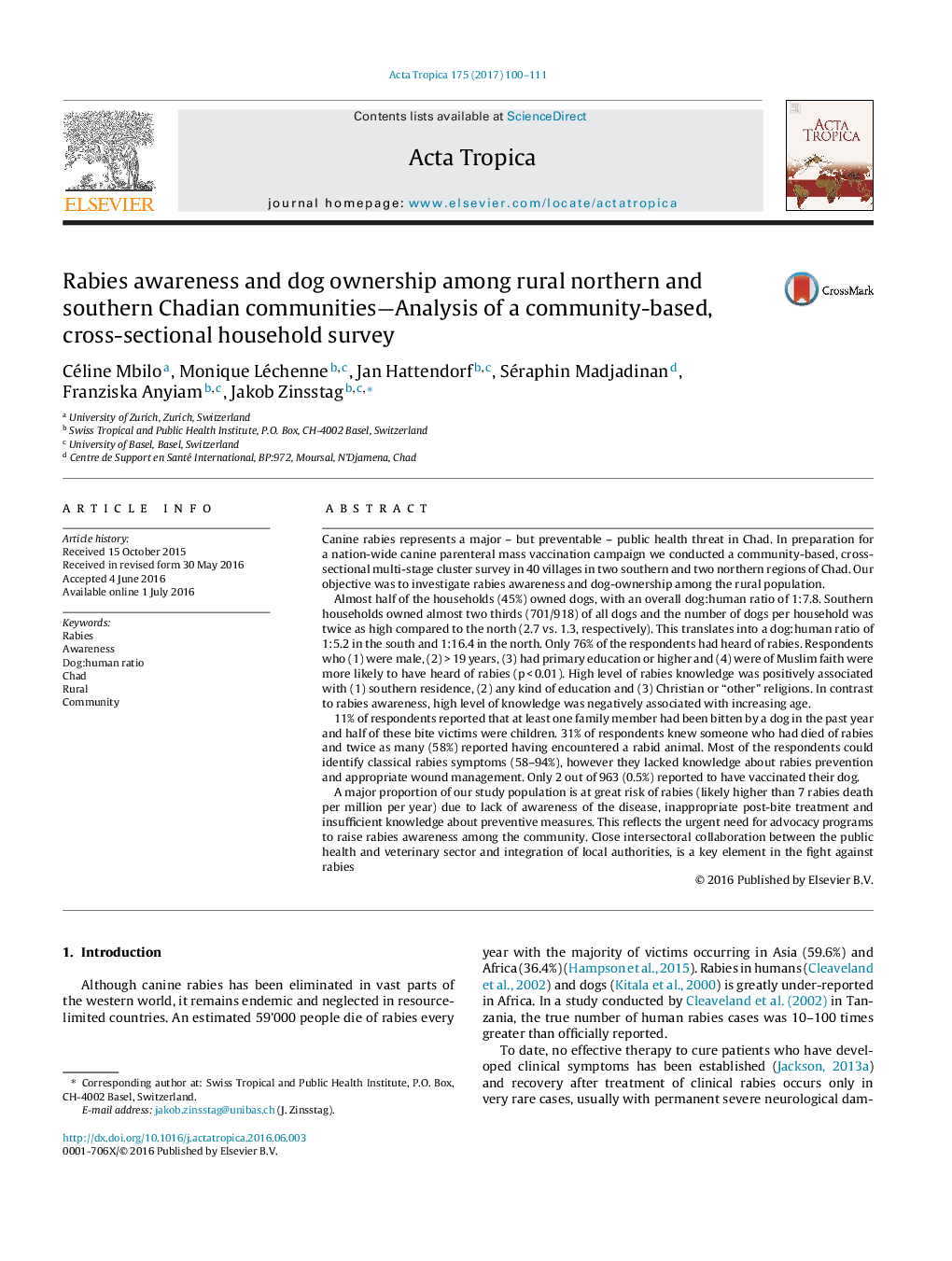| کد مقاله | کد نشریه | سال انتشار | مقاله انگلیسی | نسخه تمام متن |
|---|---|---|---|---|
| 5670745 | 1592749 | 2017 | 12 صفحه PDF | دانلود رایگان |
- Dog rabies elimination is possible in Africa.
- In this way human rabies exposure can be eliminated.
- A better understanding of the dog-human relationship is critical.
- This study contribute to a national Chadian dog rabies elimination control program.
Canine rabies represents a major - but preventable - public health threat in Chad. In preparation for a nation-wide canine parenteral mass vaccination campaign we conducted a community-based, cross-sectional multi-stage cluster survey in 40 villages in two southern and two northern regions of Chad. Our objective was to investigate rabies awareness and dog-ownership among the rural population.Almost half of the households (45%) owned dogs, with an overall dog:human ratio of 1:7.8. Southern households owned almost two thirds (701/918) of all dogs and the number of dogs per household was twice as high compared to the north (2.7 vs. 1.3, respectively). This translates into a dog:human ratio of 1:5.2 in the south and 1:16.4 in the north. Only 76% of the respondents had heard of rabies. Respondents who (1) were male, (2) > 19 years, (3) had primary education or higher and (4) were of Muslim faith were more likely to have heard of rabies (p < 0.01). High level of rabies knowledge was positively associated with (1) southern residence, (2) any kind of education and (3) Christian or “other” religions. In contrast to rabies awareness, high level of knowledge was negatively associated with increasing age.11% of respondents reported that at least one family member had been bitten by a dog in the past year and half of these bite victims were children. 31% of respondents knew someone who had died of rabies and twice as many (58%) reported having encountered a rabid animal. Most of the respondents could identify classical rabies symptoms (58-94%), however they lacked knowledge about rabies prevention and appropriate wound management. Only 2 out of 963 (0.5%) reported to have vaccinated their dog.A major proportion of our study population is at great risk of rabies (likely higher than 7 rabies death per million per year) due to lack of awareness of the disease, inappropriate post-bite treatment and insufficient knowledge about preventive measures. This reflects the urgent need for advocacy programs to raise rabies awareness among the community. Close intersectoral collaboration between the public health and veterinary sector and integration of local authorities, is a key element in the fight against rabies
Vaccinating a dog in N'Djaména during the elimination campaign in 2013 (Photo: Christian Heuss).163
Journal: Acta Tropica - Volume 175, November 2017, Pages 100-111
